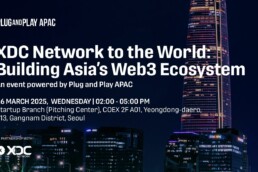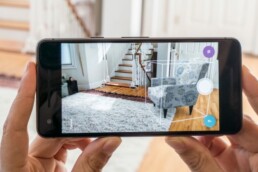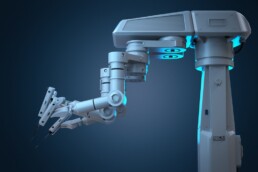SEA Anchor is a premium Southeast Asia Anchoring program, strategic venture builder, and early-stage investor. They focus on key growth strategy development, opportunity maximization, business advisory, and connections facilitation for Southeast Asia. Thousands of Korean startups are looking to enter the Southeast Asian region because it offers high-potential business opportunities that are still untapped. Korean investors also see the potential of the SEA market because it increases their potential for higher returns on their investments. By joining the SEA Anchor portfolio program, Korean startups will develop the right strategies thanks to SEA Anchor’s expert panel of consultants, venture accelerators, and ASEAN angel investors.
An Overview of the Southeast Asian Market

SEA Anchor is very experienced in the Southeast Asian market. The Southeast Asian market has two groups. One is Maritime Southeast Asia, and the other is Mainland Southeast Asia. Maritime Southeast Asia is Singapore, East Malaysia, Indonesia, the Phillippines, Brunei, and East Timor. Mainland Southeast Asia is Vietnam, Peninsular Malaysia, Laos, Myanmar, Burma, Thailand, and Cambodia.
Since Peninsular and East Malaysia are seen as just Malaysia, and East Timor is not a member of the Association of Southeast Asian Nations (ASEAN), there are 10 countries when talking about the Southeast Asian market. Therefore for startups looking to break into the Southeast Asian market, they will need to deal with ten different governments, legal systems, religious beliefs, currencies, languages, and other kinds of infrastructure. Therefore when looking to enter the Southeast Asian market, many businesses and startups narrow the list down to the top 6 biggest economies in ASEAN. This list includes Indonesia, Thailand, the Philippines, Singapore, Malaysia, and Vietnam.
These six countries each have distinct and unique markets. They all have their challenges and advantages.
SEA Anchor Understands the Potential of the SEA Market
There is a reason why Korean startups are eager to enter Southeast Asia. This is why SEA Anchor has developed the right program specialized for Korean startups. However, to fully understand the potential of the SEA market, we need to see ASEAN as a whole. The GDP of ASEAN sits at $2.95 trillion and is growing at an annual rate of 5%. Therefore Korean investors and VC firms are looking for projects focusing on the Southeast Market. The population of Southeast Asia is around 655 million. Compare this to South Korea, which has a population of 51 million. The fact that there is 13x the potential consumer base shows the vast business opportunities in the SEA region. Furthermore, Southeast Asian internet users are the most engaged in the world.
For example, in Thailand, a typical consumer spends 5 hours a day on their mobile internet, ranking Thailand #1 in the world in this category. The Philippines and Malaysia are not far behind, averaging 4 hours daily on mobile internet. Compare this usage to the U.S. or U.K., where the average consumer spends around 2 hours daily on mobile internet.
The Rise of eCommerce in SEA
SEA consumers are constantly using social media platforms like Facebook and Instagram. The growth of smartphone users is twice as high as in the US. However, this high smartphone use has not led to a sharp rise in eCommerce. Many SEA consumers will shop offline. This is very noticeable when you visit SEA countries with shops ranging from luxury shopping malls to local bargain outdoor markets. For example, you can find a street vendor selling various goods at almost every corner in Thailand. SEA makes up 3% of the $3.5 trillion global eCommerce industry. Compare this to China, which accounts for over half of all eCommerce sales worldwide.
So the question is, why are SEA consumers active on their mobile phones, not shopping online? The main reason seems to be the payment aspect. Most SEA consumers are more comfortable with cash than online payments. The two main reasons are trust factors and the fact that many SEA consumers are unbanked.
Therefore the eCommerce industry is primed to explode. Many experts predict that eCommerce in SEA will grow to $88 billion by 2025. South Korea is already in the top 5 for eCommerce sales bringing in over $110 billion in sales in 2022. Therefore many Korean eCommerce companies are looking to break into Southeast Asia to expand their reach.
ASEAN has been very active in looking for a collaboration to become a single market and production base. This will take time as many differences exist between the member nations. However, once this is done, there could be a new player in the eCommerce scene in SEA within five years.

The Challenges of Entering the SEA Market
This is why there is a lot of pressure on Korean startups to enter the SEA market. However, many Korean startups are hesitant because they know they cannot handle such a difficult task. Korean culture, regulations, geography, and infrastructure differ in each ASEAN country. This is because Southeast Asia is a highly fragmented market. Even tho ASEAN is doing its best to fix this issue; it will take many years before they are successful. Therefore any Korean startup that is successful in one country in SEA might not find the same success as they look to expand into other SEA markets.
This means they must start at square one every time they enter a new region. However, this is the only way to expand into the SEA market. SEA Anchor is headquartered in Singapore. They realize the best way for Korean startups to break into the SEA market is through Singapore.
Singapore is the First Step into SEA
 Korean startups make the mistake of launching into multiple countries simultaneously. That is not the right strategy. Korean startups need to enter one market at a time. Each market is unique, and starting with the market that resonates well with its products or services is crucial. This is why many Korean startups look to enter Singapore first. Singapore ranks #1 in Asia for IP protection and sustainability. Singapore is the easiest country to do business with while at the same time having a competitive economy. However, a Korean startup will still need help entering the Singapore market. Doing business in Singapore is about building a personal relationship first. Therefore it will take time for a Korean startup to build these relationships unless they have a partner who has already cultivated these relationships over the years.
Korean startups make the mistake of launching into multiple countries simultaneously. That is not the right strategy. Korean startups need to enter one market at a time. Each market is unique, and starting with the market that resonates well with its products or services is crucial. This is why many Korean startups look to enter Singapore first. Singapore ranks #1 in Asia for IP protection and sustainability. Singapore is the easiest country to do business with while at the same time having a competitive economy. However, a Korean startup will still need help entering the Singapore market. Doing business in Singapore is about building a personal relationship first. Therefore it will take time for a Korean startup to build these relationships unless they have a partner who has already cultivated these relationships over the years.
Why Korean Startups Should Join SEA Anchor
Entering the SEA market is not going to be easy. Different regional and local laws exist, from brand protection to intellectual property registration. For example, Vietnam, Cambodia, and the Philippines have restrictions on FDI (Foreign Direct Investment). This means that they require international firms to have local partners and shareholders. Therefore, before entering the market, there will be months of screening to get the approval to enter.
This is why Singapore is what SEA Anchor focuses on first: they do not have these restrictions regarding FDI. There are other issues to deal with when entering the Singapore market. Starting a business will require construction permits, registering the property, getting credit, and even getting electricity to your on-premise office. This is before worrying about paying taxes, making and enforcing contracts, and finding investors.
SEA Anchor understands the business environment, the role of government, and the culture of not just Singapore but the whole SEA Market. They know which countries make it easier for startups to establish their businesses in their country while others still have bureaucratic practices that prolong the business’s starting process. Remember, each country is different; just because your startup is successful in one country doesn’t mean the same strategy can be applied in another country. This is why it is important to have a partner that understands each region and can develop the right strategies for that particular region.
The SEA Anchor Venture Acceleration Program

This program is specially designed by a team of experienced venture enablers, accelerators, mentors, and key influencers with deep knowledge of the SEA market. The SEA Anchor program and advisory services partner startups, investors, and corporates to co-build and launch sustainable, environmentally friendly, and highly scalable businesses across key strategic countries in Southeast Asia and beyond. The program is specially designed by a team of experienced key influencers with deep knowledge of the Singapore and Southeast Asia markets. They will help startups and businesses reduce their risks in strategic growth.
The SEA Anchor International Market Bootcamp is a condensed program specially designed for selected startups keen to gain a first-hand understanding of Southeast Asia markets and get 1 to 1 mentorship. Their key focus is to help the teams understand the market conditions, mentor on the key product positioning, and establish local contacts for market entry. The program has three phases.
 Gaining Insights – Phase 1
Gaining Insights – Phase 1
- Remote workshops
- Market introduction
Deep Dive Coaching – Phase 2
- Remote 1-to-1 coaching
- Business Model refinement
(Optional: Business Launcher) – Phase 3
- Extended advisory
- Business development
- Fundraising
Core Mentors of SEA Anchor
Dr. James Lim
Dr. James Lim is an alumnus of the Singapore Economic Development Board. He has spent a year and a half at the top hospital in the world, the Mayo Clinic. Dr. Lim graduated from A*STAR-EDB Singapore-Standford Biodesign Programme – Innovation Class of 2012. He co-founded a medical technology startup called NephTech which focuses on the nephrology space. He has over 12 years of medical technology R&D and commercialization experience. Some R&D projects include drug-eluting metal stents, fully biodegradable stents, patent orifice occluders (PFO), injectable gel drug delivery systems, and implantable vascular access devices in dialysis applications.
Rina Neoh
Rina Neoh has over 20 years of experience in both the corporate and entrepreneurial worlds. She has a Bachelor of Science w/ honors in Computer Science and a post-graduate MBA in International Business. Rina has delivered multi-million dollar returns from over 80 startups. Therefore she has vast experience with ideation, incubation, acceleration, mentorship, investing, and scaling up in various industries. She is among the top ASEAN Angel investors and has already introduced two IPOs on the Australian Stock Exchange. In addition, she has helped execute complex cross-border mergers and acquisitions strategies within the ASEAN market.
Edmas Neo
Edmas is the founder of Accrete Innovation. He has over 20 years of experience in the IT industry. His main focus is project management and consulting across various private and public sector domains. Therefore, he greatly understands security, infrastructure, eCommerce, and social media technologies. He has already founded various acceleration programs which have accelerated over 100 startups across Singapore, Korea, and Taiwan. Furthermore, he is one of the leaders in structuring corporate innovation programs in Singapore and has enabled Fintech, InsurTech, AI, Smart Cities, and ICT programs.
These are just some of the core mentors at SEA Anchor. Make sure you check out their site to see the latest list.
For Korean startups looking to enter Singapore or raise funds, joining the SEA Anchor program is necessary. The program will help co-develop the right strategies and build the right network to accelerate their growth. They can help early-stage Korean startups raise seed funding or help more established Korean startups break into the Singaporean Market. However, participation is only available via invitation or introduction, which Seoulz can help with.
Popular
Related Posts






